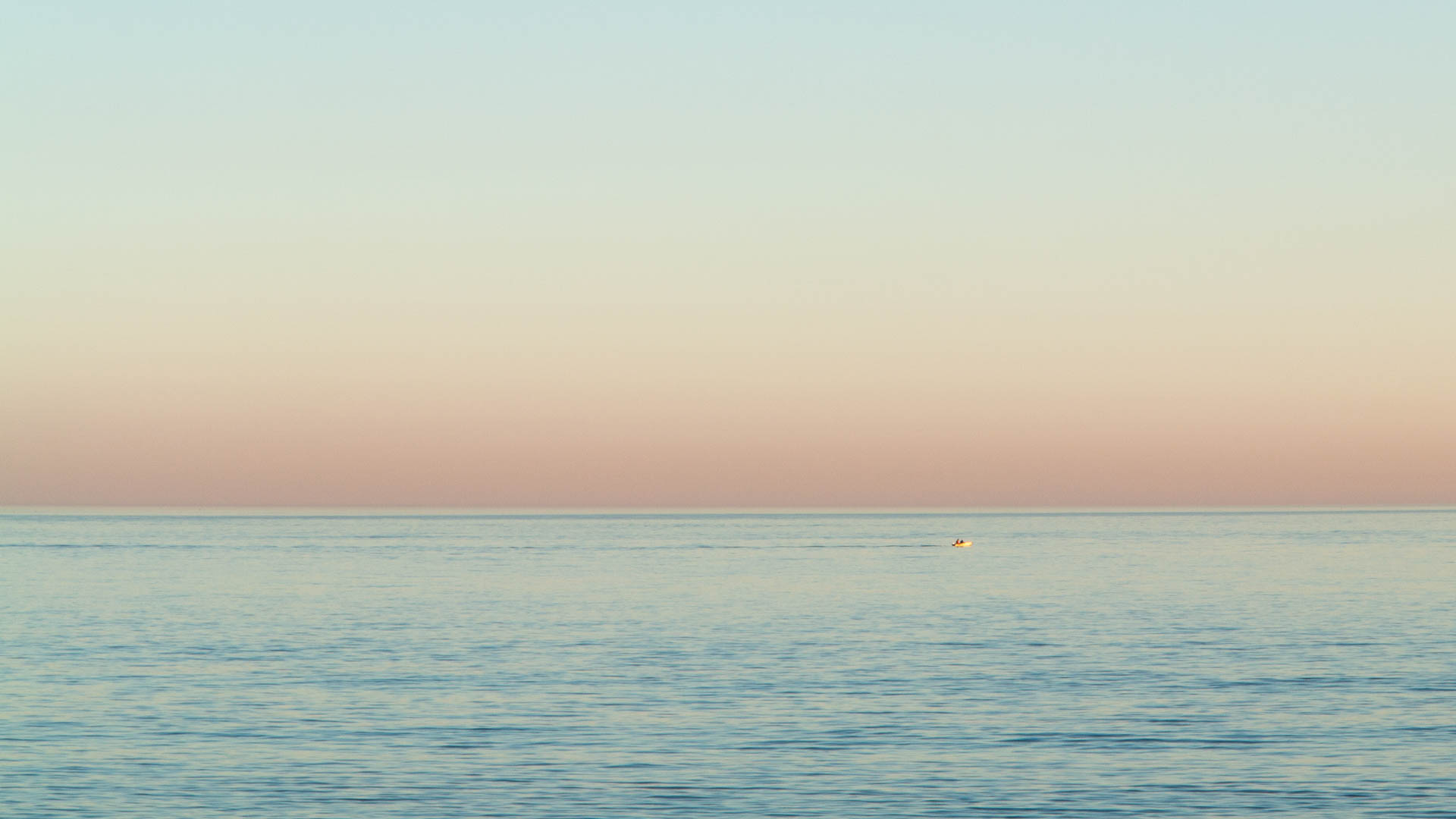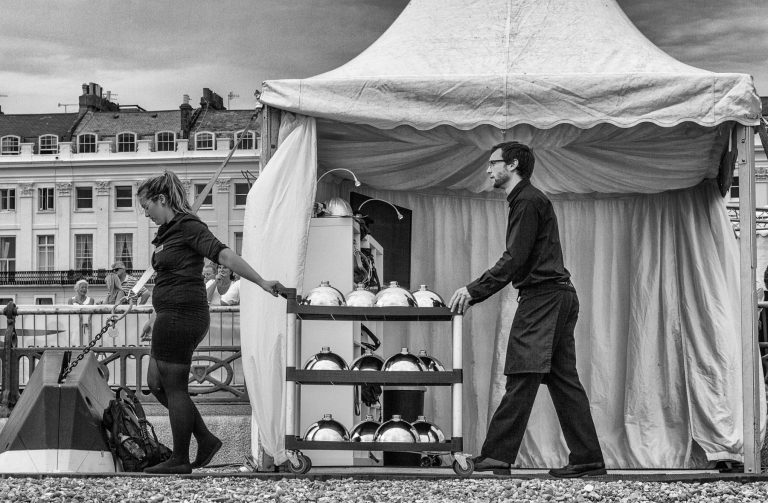Beating Gear Acquisition Syndrome
Almost every photographer I know suffers at least slightly. Understanding gear acquisition syndrome or GAS, is important if you want to stay in charge of your photography. In 1998 at age 90, the photographer Henri Cartier-Bresson, who was decidedly middle class and used a Leica, observed to the acclaimed and occasionally sharp photographer Helmut Newton: “sharpness is a bourgeois concept.” He may not have been explicitly referencing gear acquisition syndrome, but he may as well have been.
Bourgeois literally means belonging to or characteristic of the middle class, typically with reference to its perceived materialistic values or conventional attitudes. I guess he wasn’t talking about being middle class, though I plead guilty to being middle class myself; he was nailing a misplaced perception that sharpness is an essential characteristic of a good photograph. And that misplaced perception didn’t appear from nowhere. The source of that perception, the nascent photography industry, fuels Gear Acquisition Syndrome, the middle class condition of our time.

Gear Acquisition Syndrome
I would go further than Cartier-Bresson – the obsession with kit that manifests as Gear Acquisition Syndrome is decidedly bourgeois, a memory etched forever in my mind is that of a photographer armed with a massive white 400mm L class Canon lens, looming over the tiniest snowdrop you’ve ever seen somewhere near Brighton. It reminded me weirdly of the rock band Slade in their pomp, tottering about in thigh length platform boots, looking like labourers in drag. At the time nobody thought to say – “Mate, you look ridiculous!”. And so it was for this earnest photographer, trying manfully in very poor light to keep a 400mm lens steady enough to snap a snowdrop. I’m guessing the result would have pleased Cartier-Bresson mightily.
Lets see where this madness comes from..
The Kit Obsession
The problem the big three camera manufacturers, Canon, Nikon and Sony have is that the best kit tends to last for an inconveniently long time. This is true of all decent kit, sometimes it lasts longer than the company that created it. I have my mother’s Agfa Isolette dating from the 1950s. It works perfectly well. My Canon 5D mk III was my go to camera for work and play for nine years, repaying it’s hefty price tag many times over and although it needed a service by the time I upgraded, showed no other signs of wear at all.
Yet in that period, Canon released no fewer than three cameras that could legitimately have been described as an upgrade.
The Canon 5D S and SR with 50mp sensors were released in 2015
The Canon 5D mk IV with 4K video capability was released in 2016
The mirrorless Canon EOS R5 was released in 2020
and so on…

Understanding the Photography Business
Now I haven’t gone down the mirrorless route so far, and it’s possible I never will, but the beguiling arguments about weight, speed, pixels, 8k video, relentlessly hammer at my senses. As rapidly as my eyesight fades, a level of sharpness is achieved that I can’t even see!
And don’t get me wrong, I love my Canon cameras. Why shouldn’t they devote their time to making them better? I guess for those like me who make their living with cameras, the expense is an investment though I’ve never once had a client enquire what camera I use. But for the rest, it’s a fast train to feelings of inadequacy. I’ve read articles recently on the subject of mindful photography being a fantastic defence against depression. A sentiment I wholeheartedly endorse. But that little voice, whispering around the edges – “He’s got an R5 – how many more pixels does that have…”
The Pixel Wars
My point is that the manufacturers contribute to gear acquisition syndrome every time they release a new sensor or capability. Doesn’t matter what camera you use – and don’t kid yourself, there is so little difference between the main brands now that it really is a matter of brand loyalty. At the end of the day, a camera is a camera and a lens a lens. Some of the most feted photographs in history have been taken on extraordinarily primitive equipment.
The pixel wars are simply the battlefield of choice. Have you ever looked at a billboard up close? Our ability to appreciate the sharpness delivered by any camera is determined by the medium we use to view the image. How many people own HDR capable TVs? It’s a joke, camera manufacturers and screen vendors raise the bar in lockstep, year after year delivering image resolution that most people cannot even see. And to add insult to injury, In actual fact photographers go to great lengths to unsharpen images these days. To put sharpness back in its box, it is just another tool that helps us tell our story, guiding of the viewer’s eye to the parts of the photograph we want them to look at.
Reality Check – How a Photograph is Viewed
Let me explain. The first thing the viewer’s eye alights on is normally the brightest part of the photograph, not the sharpest. Even the landscape photographer’s obsession with sharpness front to back is based on a fallacy. When we look at a landscape we don’t see sharpness without end, we see the bit we are focussing on as sharp and the surrounds as less sharp. If we are looking at an object in the foreground, the background is not sharp.
Of course the combination of eye and brain is faster than that of lens and sensor so we may think we see everything in focus, but the reality is our eyes adjust their focus and the brain fills in the gaps. Everything in a landscape is sharp if you get close enough to it. But we don’t see it that way, we scan and readjust. The trouble with images is that they are fixed. You can’t readjust an image in real time.
Photographers make a two dimensional plane look three dimensional by using a number of tricks. The foreground is usually sharp, the background less so. Colours in the foreground are generally warmer than those in the background (this mirrors reality, look carefully at a range of mountains in the evening and you’ll see a bluer tint in the distance). Sharpness is just another trick and obsessing about it works brilliantly to extract more money from affluent photographic enthusiasts, amateur and professional.
The Key – Understand Your Kit
The key to good photography is understanding the kit you have so that you can shift your consciousness from twiddling knobs and dials to composing a decent image and capturing the moment when it looks its best.
It’s not rocket science, In landscape photography and street photography too, the elements of a picture come together over period of time. We learn to anticipate the movement of clouds, or of people, to anticipate the light in order to capture the best possible image. What gets in the way of this for many people is new kit. I’m sure we’ve all been there, twiddling with Aperture, checking ISO, look up and you see the image has disintegrated…the moment has gone.
So, on to gear acquisition syndrome…
Gear Acquisition Syndrome – a chronic condition
Alas, although I understand what causes it, the itch is no less itchy! I flatter myself that the kit I buy now is more essential than the kit I bought then, but I was tidying up my office a few days ago and came across some relatively new widgets that I had no idea of their function! How bad is that? I can’t throw them away lest I discover they are priceless spares for a vital piece of kit. But at least I don’t have a box full of redundant cables. Actually I threw those away in a fit of purist righteousness a month or so ago and now I have no cable for a three terabyte disk that at the time must have been state of the art!
In context, Gear Acquisition Syndrome is a subset of our consumer based economy. We are encouraged to spend in order to keep the money circulating and the photography industry is no worse than the automobile industry in this respect. I think I have my gear acquisition under control, I haven’t bought a lens in over a month and a camera in two. But that’s me sorted for at least twelve months now.
However, I have bad news. I realised quite recently that in order to photograph some panoramas of the Sierra Nevada at dawn, I would need to spend the night up in the mountains. It’s summer, I would need a lightweight sleeping bag and mat. No problem, with the help of Google and some recommendations from other photographers I know, I discovered a whole new world of pain. Goodbye Canon, hello Thermarest. Within a couple of hours my partner decided she might join me and the accumulated shopping list came to over €1000. I had no idea, but people buy sheets to take camping!
The moral of this story is – you can’t beat it, so get your money’s worth. Only spend money if you think you will get value back. In my case that involves dawn and sunset images of less photographed vistas in the Sierra Nevada, Time lapses and Astrophotography too. Will they earn me €1000? Certainly not directly but we live in hope!
This post is part of my occasional Art of Photography series.
Subscribe…
I’ll keep you in the loop with regular monthly updates on Workshops, Courses, Guides & Reviews.
Sign up here and get special prices on all courses and photowalks in 2024






